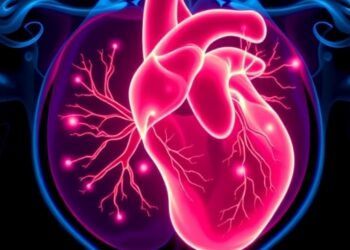Colorectal cancer (CRC) remains a significant global health concern, being the third most diagnosed cancer and the second leading cause of cancer-related deaths worldwide. In 2020 alone, CRC accounted for 1.9 million new cases and nearly 935,000 deaths. The incidence of CRC is expected to rise, with projections estimating 3.2 million new cases annually by 2040. This trend underscores the urgent need for more effective therapeutic strategies. CRC predominantly affects older adults, with around 80% of new cases occurring in individuals over 55 years old, reflecting the impact of aging on cancer susceptibility.
Colorectal cancer (CRC) remains a significant global health concern, being the third most diagnosed cancer and the second leading cause of cancer-related deaths worldwide. In 2020 alone, CRC accounted for 1.9 million new cases and nearly 935,000 deaths. The incidence of CRC is expected to rise, with projections estimating 3.2 million new cases annually by 2040. This trend underscores the urgent need for more effective therapeutic strategies. CRC predominantly affects older adults, with around 80% of new cases occurring in individuals over 55 years old, reflecting the impact of aging on cancer susceptibility.
Current CRC treatment regimens primarily include a combination of surgery, radiation therapy, and chemotherapy. Chemotherapeutic agents such as oxaliplatin, irinotecan, leucovorin, Tegafur-Uracil, capecitabine, and 5-fluorouracil are commonly used, alongside monoclonal antibodies targeting specific cancer cell markers. However, despite the arsenal of available treatments, CRC’s high mortality rate indicates the limitations of existing therapies and the pressing need for more effective and targeted treatments. Advances in understanding the epigenetic landscape of CRC have spurred interest in epigenetic modifiers, or “epidrugs,” which offer a novel approach by targeting the reversible nature of epigenetic changes in cancer cells.
Over the past two decades, substantial research has focused on the role of epigenetic alterations in CRC. It has been established that hypermethylation of promoter regions in specific genes leads to their silencing, contributing to the pathogenesis of CRC. Importantly, this hypermethylation is reversible, presenting an opportunity to restore normal gene function through the inhibition of DNA methyltransferases (DNMTs). Several natural and synthetic compounds have demonstrated potential as DNMT inhibitors. Natural compounds such as curcumin, tea polyphenols, quercetin, and nanaomycin A have shown DNMT inhibitory effects, alongside synthetic agents like 5-azacytidine, decitabine, procainamide, and zebularine. These inhibitors can reactivate silenced tumor suppressor genes, offering a promising therapeutic strategy.
In addition to DNMT inhibitors, the review hypothesizes that inhibitors of ten-eleven translocation (TET) enzymes could serve as another class of effective epigenetic modifiers. TET enzymes are involved in the demethylation of CpG islands in genomic DNA, a process that can lead to global DNA hypomethylation and chromosomal instability, both of which are hallmarks of cancer progression. Inhibiting TET enzymes could potentially mitigate these effects by maintaining DNA methylation levels and preventing chromosomal instability. Preliminary studies have indicated that certain TET inhibitors possess anticancer properties, supporting the potential of this approach.
Several molecules have been identified as promising TET inhibitors. Cytosine-based derivatives, such as Bobcat212 and Bobcat339, have shown significant inhibitory effects on TET1 and TET2 enzymes. Bobcat212, chlorinated at the 5 position, demonstrated 57% and 43% inhibition of TET1 and TET2, respectively. Bobcat339, substituted with 3-biphenyl at the R2 position, further increased TET1 inhibition. These findings suggest that targeting TET enzymes with specific inhibitors could be a viable strategy for combating CRC by modulating the epigenetic landscape.
The review suggests that a combinatorial approach involving different epigenetic modifiers could be tailored to enhance therapeutic efficacy. This strategy could involve DNMT inhibitors, TET inhibitors, and other epigenetic drugs to target multiple pathways simultaneously, thereby overcoming the limitations of single-agent therapies. Personalized treatment regimens based on the patient’s specific epigenetic profile could optimize outcomes and reduce adverse effects. Further research is required to validate these combinations, understand their mechanisms of action, and determine the most effective therapeutic strategies.
This review highlights the potential of epigenetic modifiers, particularly DNMT and TET inhibitors, in the treatment of CRC. By targeting the reversible nature of epigenetic alterations, these epidrugs offer a promising avenue for restoring normal gene function and combating CRC. Future studies should focus on optimizing these therapeutic strategies, exploring new combinations of epigenetic modifiers, and personalizing treatments to improve patient outcomes in CRC. Continued research and clinical trials will be crucial in translating these findings into effective therapies for CRC patients.
Full text
The study was recently published in the Gene Expression.
Gene Expression (GE) is an open-access journal. It was launched in 1991 by Chicago Medical School Press, and transferred to Cognizant Communication Corporation in 1994. From August 2022, GE is published by Xia & He Publishing Inc.
GE publishes peer-reviewed and high-quality original articles, reviews, editorials, commentaries, and opinions on its primary research topics including cell biology, molecular biology, genes, and genetics, especially on the cellular and molecular mechanisms of human diseases.
GE has been indexed in Medline (1991-2021), Scopus, Biological Abstracts, Biosis Previews, ProQuest, etc.
Follow us on X: @xiahepublishing
Follow us on LinkedIn: Xia & He Publishing Inc.
Journal
Gene Expression
Article Title
Potential Epigenetic Modifiers Targeting the Alteration of Methylation in Colorectal Cancer
Article Publication Date
14-May-2024




